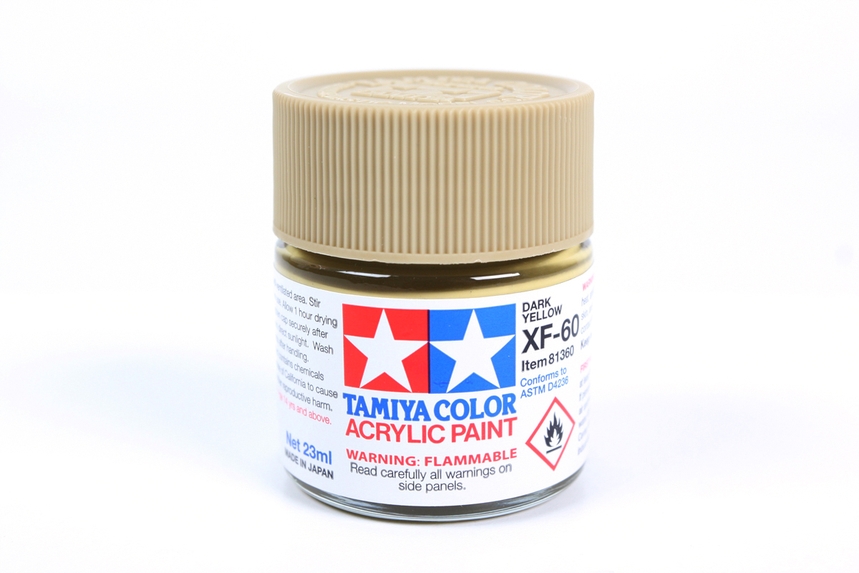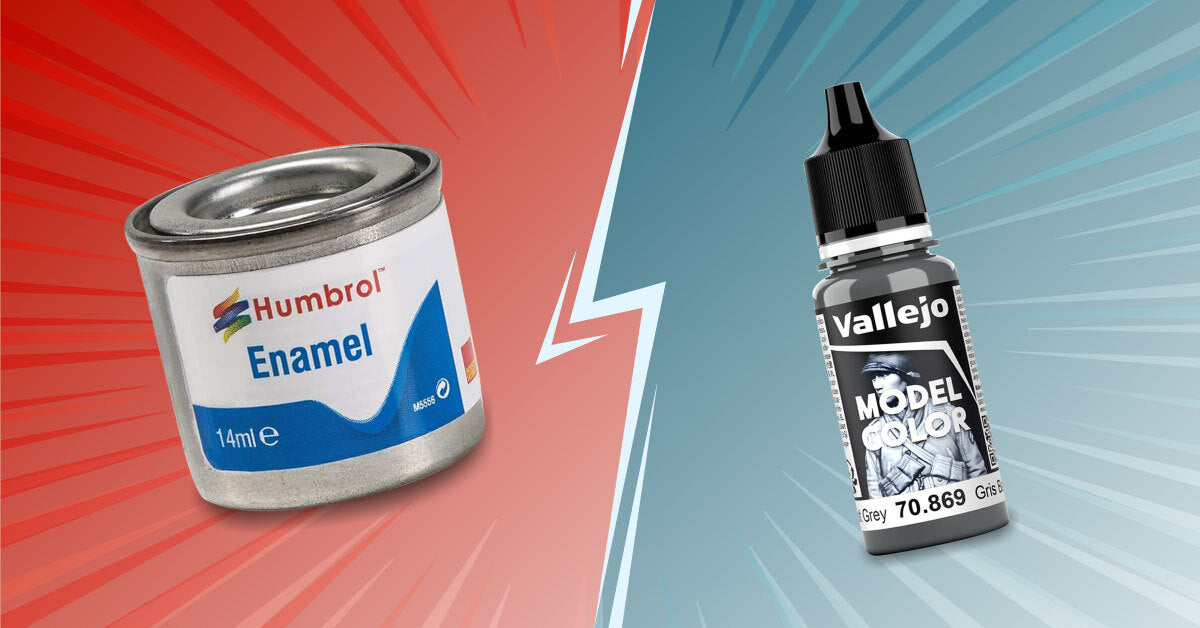The Difference Between Acrylic and Enamel Paint
Your guide to choosing the perfect paint for your modeling projects
When it comes to model painting, choosing the right type of paint can make all the difference in the final result. Acrylic and enamel paints are the two most popular options, each with its unique properties and benefits. Understanding the differences between these paints will help you select the best one for your project. In this article, we'll explore the characteristics, advantages, and ideal uses of acrylic and enamel paints, guiding you towards making an informed decision for your next masterpiece.
Quick Links: Acrylics Collection | Enamel Model Paint | Primers | Thinners
| Acrylic vs. Enamel Paint: Quick Comparison | ||
|---|---|---|
| Aspect | Acrylic Paint | Enamel Paint |
| Composition | Water-based, pigment suspended in acrylic polymer | Oil-based, pigment suspended in enamel resin |
| Drying Time | Quick, usually within minutes to an hour | Slow, can take up to 24 hours or more |
| Finish | Matte to semi-gloss | Glossy, smooth finish |
Composition and Solvents
Acrylic Paints
Water-based, made from pigments suspended in an acrylic polymer emulsion. This composition allows for:
- ✓ Easy mixing
- ✓ Quick drying
- ✓ Simple cleanup with soap and water
Explore our acrylics collection, including popular brands like Tamiya.
Enamel Paints
Oil-based, consisting of pigments suspended in an enamel resin. They offer:
- ✓ Durable, glossy finish
- ✓ Ideal for many modeling applications
- ✓ Require solvents for thinning and cleanup
Discover more in our enamel model paint collection.


Helpful Tip:
When choosing between acrylic and enamel paints, consider your project's requirements. If you need quick drying times and easy cleanup, go for acrylics. If durability and a high-gloss finish are your priorities, enamels might be the better choice.
Drying Time
Acrylic paints are renowned for their quick drying times, often setting within minutes to an hour. This rapid drying allows for swift layering and detailing, making them a favorite for modelers working on tight schedules. Conversely, enamel paints dry slowly, sometimes taking up to 24 hours or more. This extended drying time can be beneficial for achieving a smooth, glossy finish without brush strokes.
To expedite drying and ensure smooth application, consider using our range of primers and thinners.
Durability and Finish
Acrylic Paints
- Flexible, less prone to cracking
- Range of finishes: Matte to semi-gloss
- Ideal for projects requiring durability and flexibility
Enamel Paints
- Hard, durable finish
- Resists chipping and fading
- Perfect for high-wear areas and outdoor use
For a variety of finishes, explore our model spray paints and RC spray paints.
Cleanup
One of the major advantages of acrylic paints is their easy cleanup with just soap and water. This makes them convenient for quick projects and lessens the need for harsh chemicals. Enamel paints require specific solvents like mineral spirits for effective cleanup, which can be more involved but necessary for achieving their superior durability. For all your painting needs, check out our paint brushes and cleaners collection.
Health and Safety Considerations
Acrylic paints are generally non-toxic and emit low odors, making them safer for indoor use and around children. They are ideal for hobbyists who prioritize health and safety. Enamel paints contain VOCs (volatile organic compounds), necessitating good ventilation and protective gear during application.
For a safer painting experience, we recommend our selection of painting accessories, including masks and gloves.
Best Uses
Acrylic Paints
- Indoor projects
- Quick applications
- Detailed work
Enamel Paints
- Outdoor projects
- High-wear surfaces
- Where durability is paramount
For those seeking high-quality paints for any project, visit our comprehensive paint collection.
To further enhance your painting skills, consider exploring our paint markers for detailed work, paint sets for beginners, and pigments and washes for advanced techniques. Don't forget to check out our weathering products and Green Stuff World paints for unique effects.
Conclusion
Choosing between acrylic and enamel paint largely depends on the specific needs of your project. Acrylic paints offer quick drying times, easy cleanup, and flexibility, making them ideal for indoor and detailed work. Enamel paints, with their hard, durable finish and resistance to chipping, are perfect for outdoor projects and high-wear surfaces. By understanding the distinct characteristics of each type, you can ensure the best results for your modeling endeavors.
Explore our extensive range of paints and painting accessories, including paint mixing jars, to find everything you need for your next project. Whether you're a seasoned modeler or a beginner, the right paint can transform your work. Happy painting!
 is here! Shop now, pay later in 4 easy installments
is here! Shop now, pay later in 4 easy installments

